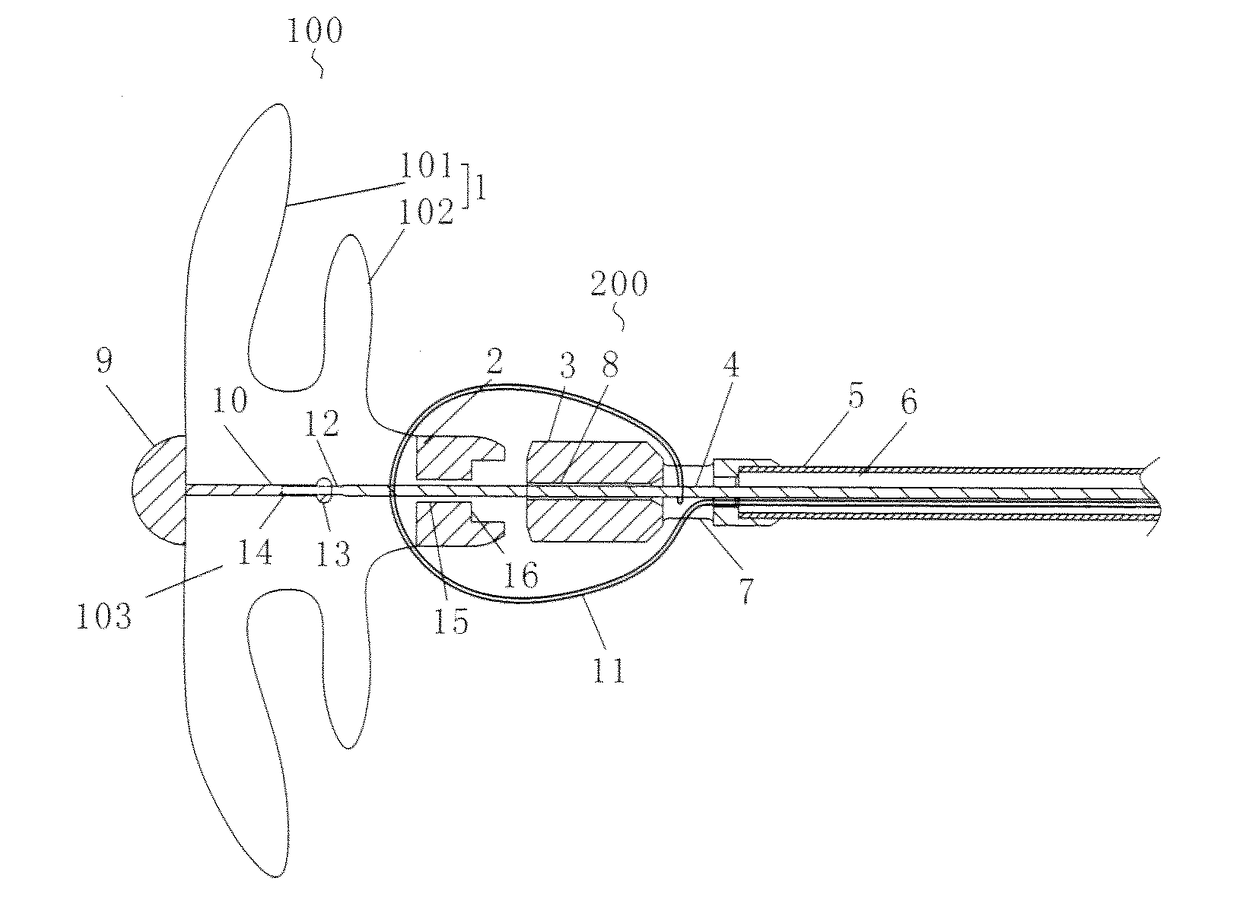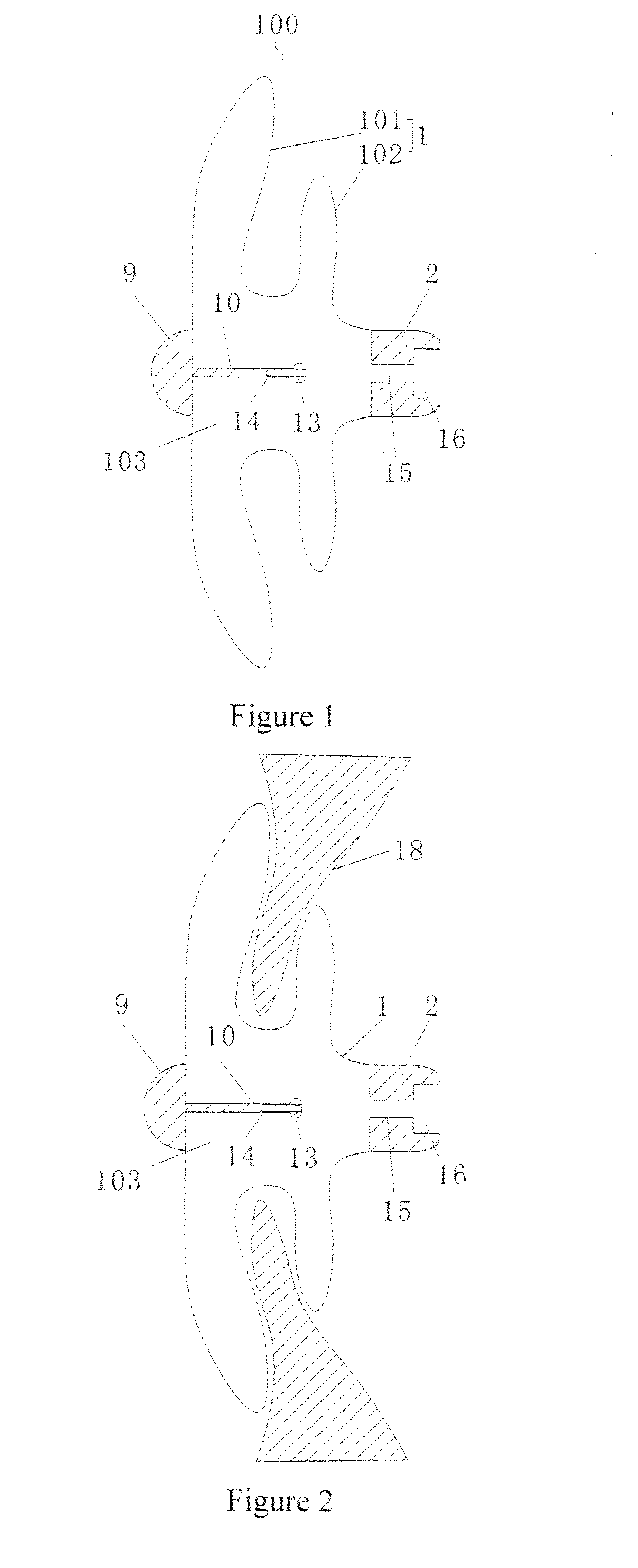Occluder and Occlusion Device
a technology of occlusion device and occluder, which is applied in the field of interventional medical devices, can solve problems affecting the occlusion effect, and achieve the effects of high locking reliability, simple structure and simplified preparation process and locking operation
- Summary
- Abstract
- Description
- Claims
- Application Information
AI Technical Summary
Benefits of technology
Problems solved by technology
Method used
Image
Examples
first embodiment
[0040]In the first embodiment, as shown in FIGS. 1-3, the occluder 100 comprises a meshed occlusion body 1 provided with a cavity 103, and a proximal hub 2. The occluder 100 further comprises a locking member 10 and a stopping member 13 both of which are disposed in the cavity 103, wherein the distal end of the locking member 10 is connected with a distal end of the occlusion body 1, and the stopping member 13 is disposed at a proximal end of the locking member 10. The proximal hub 2 is provided with a locking hole 15 penetrating through the cavity 103. The radial size of the stopping member 13 is slightly larger than an aperture of the locking hole 15. The radial size of the locking member 10 is smaller than an aperture of the locking hole 15, and at least one of the proximal hub 2 and the stopping member 13 is an elastic member. The elastic member can undergo resilient deformation under external force, and can completely recover from the deformation after the external force disapp...
second embodiment
[0059]In the second embodiment, as shown in FIG. 9, the occlusion device comprises the occluder 100, a hollow delivery mechanism 200, and the traction member 4 movably accommodated in the delivery mechanism 200. The distal end of the traction member 4 extends through the distal end of the delivery mechanism 200 and is detachably connected with the proximal end of the locking member 10 in the cavity 103. The traction member 4 can utilize traction on the locking member 10 to drive the distal end of the occluder 100 to move towards the proximal end under external force by an operator, for example a surgeon, until the stopping members 13 extend through the locking hole 15 and then press against the end face of the proximal hub 2 to lock the occluder 100.
[0060]Referring to FIGS. 9 and 10, in one implementation, the hollow delivery mechanism 200 comprises a delivery tube 5, and the delivery tube 5 is axially provided with a lumen 6 that communicates with the outside at least at the distal...
PUM
 Login to View More
Login to View More Abstract
Description
Claims
Application Information
 Login to View More
Login to View More - R&D
- Intellectual Property
- Life Sciences
- Materials
- Tech Scout
- Unparalleled Data Quality
- Higher Quality Content
- 60% Fewer Hallucinations
Browse by: Latest US Patents, China's latest patents, Technical Efficacy Thesaurus, Application Domain, Technology Topic, Popular Technical Reports.
© 2025 PatSnap. All rights reserved.Legal|Privacy policy|Modern Slavery Act Transparency Statement|Sitemap|About US| Contact US: help@patsnap.com



